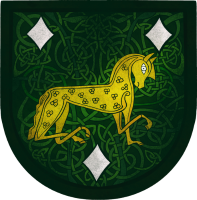Perform Like You Mean It!
What makes a performance come alive and connect with audience? How do we go from “that was lovely” to “WOW”? While the secret behind a sparkling performance may seem mysterious, esoteric, and incomprehensible, these soft skills can be developed by any performer with time, care, and thought. However, developing these skills can be challenging, as they require complex and nuanced integration of physicality, timing, flexibility, and emotion.
To start participants on this path, this class will share immediately-employable tips and tricks as well as techniques to practice and concepts to consider. Some of what we will cover includes:
- Developing vulnerability on stage, what it looks like, how to handle it, and why it matters
- Engaging with the audience authentically by leaning into strengths
- Creating a performance that flows
- Navigating audience expectations
- Why memorization matters
This class will also apply the content to performances in languages other than Modern English, as well as persona-based and historicity-focused pieces, with an emphasis on poetry, singing, and other vocal performances.
If you are performing in other languages, a nervous performer, or simply want to take your performances to the next level, this is the class for you!
Understanding and Writing Alliterative Poetry
Old English Alliterative Verse is the earliest form of English poetry, used primarily from ~500 to 1190, while alliterative revival is an English verse form in use from ~1350 to ~1500. In this class, we will discuss the history and structure of alliterative revival poetry, as well as how to begin composing in this form yourself!
Click here for the current slide packet (May 2021).
Who Am I? Developing A Persona
Appropriate for people in early and intermediate stages of persona development, this class covers the different perspectives regarding personas and concepts for creating a person, how to research (even if you hate it), persona fear and FOMO, and first steps, next steps, and the ongoing journey.
Using Science, Making Art: Organizing A&S in the Pandemic & Beyond
In March of 2020, the Shire of Roxbury Mill’s A&S “Horde” (MoAS and deputies) quickly and successfully transitioned our weekly in-person A&S meetings into a virtual activity. While organizing and running A&S in a virtual environment can be a challenge, our team discovered tactics and techniques that make it as equally rewarding as in-person A&S.
In this class, Lady Ealawynn Maeru (Ela), Lady Korrin Valravn, and Lady Lucy of Wigan will discuss how to create a team, plan classes, and create a sustainable A&S schedule. In particular, we will discuss how to analyze your local group’s wants, needs, demands, and abilities in order to find the A&S plan that works best for your group. We will also touch on technological demands, issues, and concerns. While this class will focus on planning during the pandemic, many of our methods were developed pre-pandemic and thus will be useful even in the eventual aftertimes!
Let’s Get Faded: Natural Dyes and Sunlight
In 2019, when Lady Ela first began experimenting with natural dyeing, she decided that she wanted to do a colorfastness/fade test of dyes before investing in dyeing full garments. The dyes tested were weld, madder, indigo, and cochineal, alone and in combination. Never one to do things by halves, she decided to test the amount of fading for one week, one month, three months, six months, and one year (the entirety of 2020). On December 31, 2020, the experiment was complete, and… well, you’ll have to come to the class! Ela will discuss (and share lots of pictures of!) the process and results of this year-long experiment. She will also discuss ways to employ natural dyes while caring for dyed goods.
Dyeing without Dying: An Introduction to Natural Dyes
In this introductory class, we will briefly cover the history of natural dyes before discussing basic instructions for dyeing. The historical section will focus on madder, weld, and woad, but will also mention kermes, cochineal, murex, and indigo. The dyeing discussion will focus on madder, weld, indigo, and cochineal. This class will be significantly informed by a year-long natural dye fade test as well as more recent experiments by the teacher.
Ænglisc Is Wyrd: A History of the English Language
In this lecture-based class, a language professional will tell you why, exactly, English is so weird! Starting with a brief mention of English’s ancient father Proto-Indo-European, we will focus on the political, social, and cultural changes that lead from Old English to Middle English to Early Modern English. Languages that significantly influenced modern English will also be mentioned. To clearly grasp the changes, we will follow several words and phrases as their shape and meaning changes over time. This class is designed to familiarize students with different linguistic and grammatical aspects of the English language to prepare them for exploring the many varieties of historic English.
May I Give You Some Feedback?
The act of making is deeply personal, and sharing what we have made can be an intensely vulnerable experience. As a professional writing tutor, Lady Ela is familiar with the practical techniques and interpersonal skills that create a positive, supportive environment for optimal growth. Done well, the critiquing process can help both the giver and receiver grow in their fields. We will cover techniques for initiating feedback kindly, pedagogical practices that support the recipient, and important differences between oral and written feedback.
Hwaet saegst thu? An Introduction to Old English
Research 101 & 102 — Academic Research for the SCA
An overview of research techniques, suitable for beginners.
Historical Knitting
This lecture is an overview of knitting before 1600, focusing on the regions, techniques, and materials of documentable, extant items.
Other Classes I’ve Taught
Butted Chain Mail
Handsewing Basics and Flatfelling
Introduction to Spindle Spinning
Newcomer Garb the Period(ish) Way
